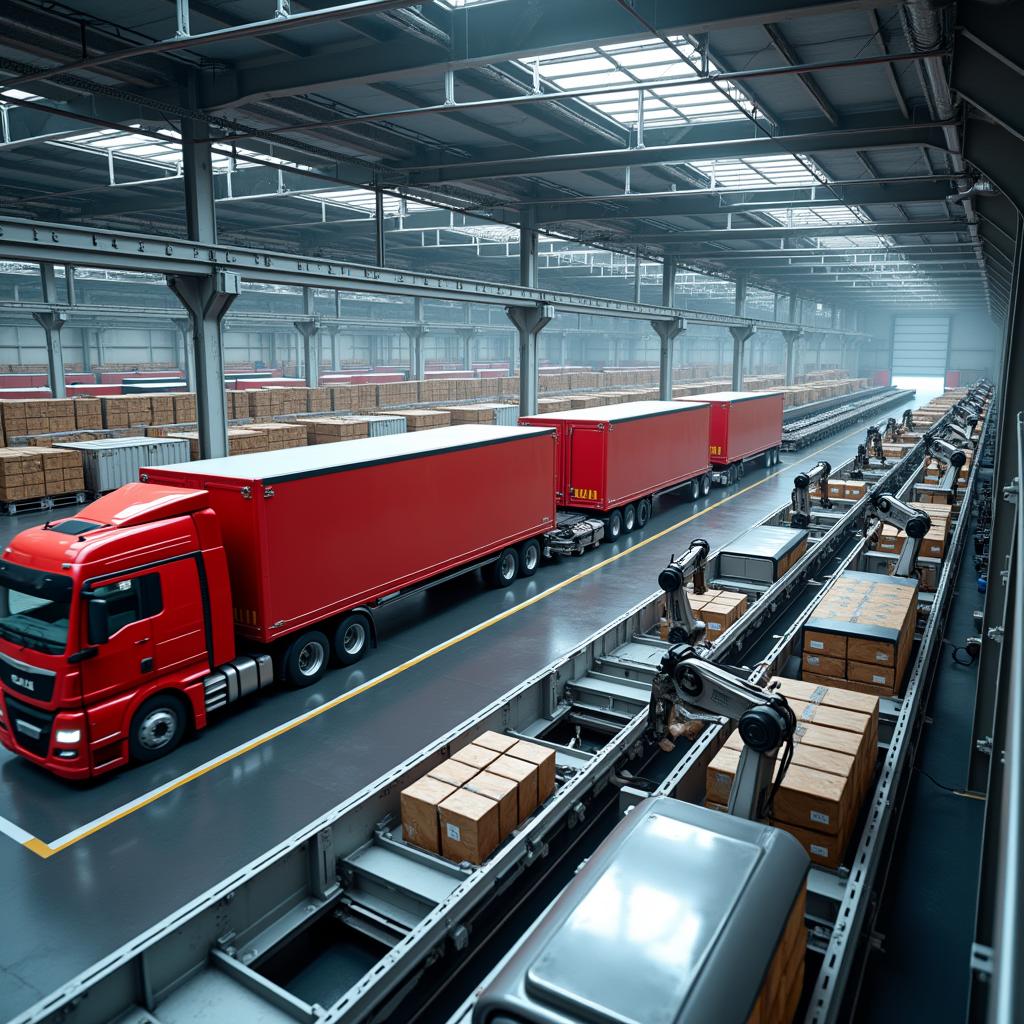How Automation Is Transforming Trucking Warehouses
The landscape of modern warehousing is undergoing a revolutionary transformation. Automation in trucking warehouses has become the driving force behind increased efficiency, improved safety, and enhanced productivity across the supply chain industry. From autonomous mobile robots to sophisticated inventory management systems, these technological advancements are reshaping how warehouses operate in the 21st century.
The Evolution of Warehouse Automation
The journey from traditional manual warehousing to today’s automated facilities has been remarkable. Just a decade ago, most warehouse operations relied heavily on manual labor for everything from picking and packing to inventory management. Today, automation technologies have revolutionized these processes, creating smarter, more efficient facilities that can operate around the clock.
According to recent data from the Material Handling Industry (MHI), over 80% of warehouse operators plan to implement some form of automation by 2025. This significant shift reflects the growing recognition of automation’s benefits in addressing common warehousing challenges, including labor shortages, increasing customer demands, and the need for faster delivery times.
Key Technologies Driving Warehouse Automation
Automated Storage and Retrieval Systems (AS/RS)
AS/RS technology represents one of the most significant advances in warehouse automation. These systems use computer-controlled machines to automatically place and retrieve loads from defined storage locations, maximizing both storage density and retrieval speed.
Benefits of AS/RS include:
- Reduced labor costs
- Improved inventory accuracy
- Maximized storage space utilization
- Enhanced worker safety
- Decreased product damage
Autonomous Mobile Robots (AMRs)
AMRs have revolutionized internal logistics by autonomously navigating warehouse floors, transporting materials, and collaborating with human workers. Unlike their predecessors, modern AMRs use sophisticated sensors and AI to adapt to changing environments and optimize their routes in real-time.
Advanced Warehouse Management Systems (WMS)
Modern WMS platforms integrate with various automated systems to provide real-time visibility and control over warehouse operations. These systems optimize everything from inventory placement to picking routes, significantly improving operational efficiency.
The Impact on Workforce and Operations
While some worry that automation might eliminate jobs, the reality is more nuanced. Automation in trucking warehouses is creating new opportunities for workers to develop technical skills and take on more strategic roles. According to a study by the U.S. Bureau of Labor Statistics, warehouse automation is expected to create more jobs than it eliminates over the next decade.
Key workforce changes include:
- Shift from manual labor to technical oversight
- Increased demand for maintenance technicians
- New roles in automation programming and management
- Enhanced focus on data analysis and system optimization
Cost Considerations and ROI
Implementing warehouse automation requires significant initial investment, but the long-term benefits often justify the costs. Companies typically see ROI within 2-3 years through:
- Reduced labor costs
- Improved accuracy and efficiency
- decreased operating expenses
- Enhanced customer satisfaction
- Increased throughput capacity
Future Trends in Warehouse Automation
The future of warehouse automation looks increasingly sophisticated, with several emerging trends shaping the industry:
Artificial Intelligence and Machine Learning
AI and ML are enabling predictive maintenance, optimized inventory management, and more efficient order fulfillment strategies. These technologies continue to evolve, offering increasingly sophisticated solutions for warehouse operations.
Internet of Things (IoT) Integration
IoT sensors and connected devices are creating smart warehouse environments that can monitor and optimize operations in real-time, from temperature control to equipment maintenance scheduling.
Advanced Robotics
Next-generation robots with enhanced capabilities, including improved grip sensitivity and advanced visual processing, are being developed to handle more complex warehouse tasks.
Implementation Strategies and Best Practices
Successful automation implementation requires careful planning and execution. Key considerations include:
Planning Phase:
- Thorough assessment of current operations
- Clear identification of automation goals
- Detailed cost-benefit analysis
- Comprehensive implementation timeline
Implementation Phase:
- Phased rollout approach
- Comprehensive staff training programs
- Regular progress monitoring
- Continuous optimization and adjustment
Conclusion
The transformation of trucking warehouses through automation represents a significant leap forward in supply chain efficiency and capability. As technology continues to evolve, the opportunities for optimization and improvement will only grow. For businesses looking to remain competitive in today’s fast-paced logistics environment, embracing warehouse automation is no longer optional—it’s essential for survival and growth.
Ready to explore how automation can transform your warehouse operations? Our team of experts is here to help you navigate the future of warehouse automation. Contact us today at +1 206-337-4787 to discuss your specific needs and discover how we can help you implement the right automation solutions for your business. Don’t wait to modernize your operations—take the first step toward a more efficient, productive future today.







